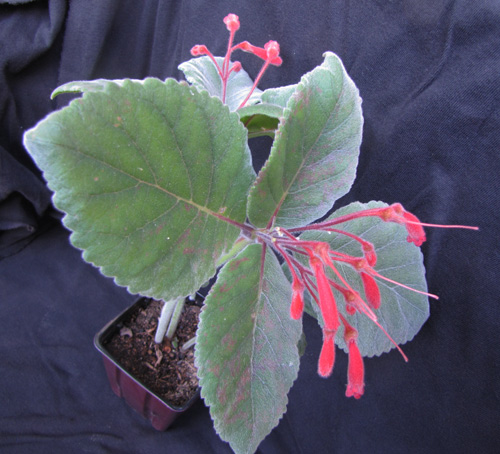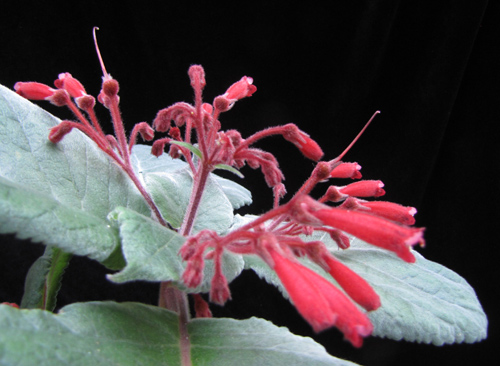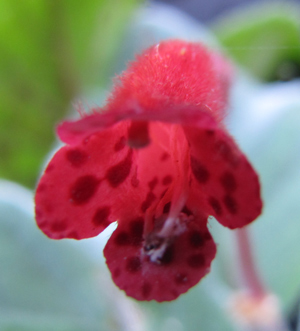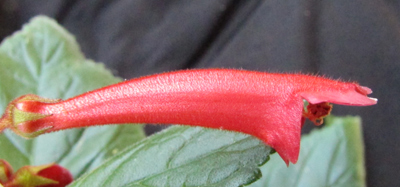
I did this cross in 2010. The parents were S. leucotricha and S. ramboi (known at that time as S. "Desafinado").
This cross was part of a project to make all three crosses in the triangle containing the two species above and also S. glazioviana. I did the other two crosses in 2009 and 2010; the results are reported elsewhere.
This picture was taken in May 2013.

As is true of many sinningias, this hybrid improves with age: sturdier stems, larger leaves, and more flowers.
This picture was taken in May 2017.
There is potential for further hybridizing here, to bring out more silver hairs on the foliage.


